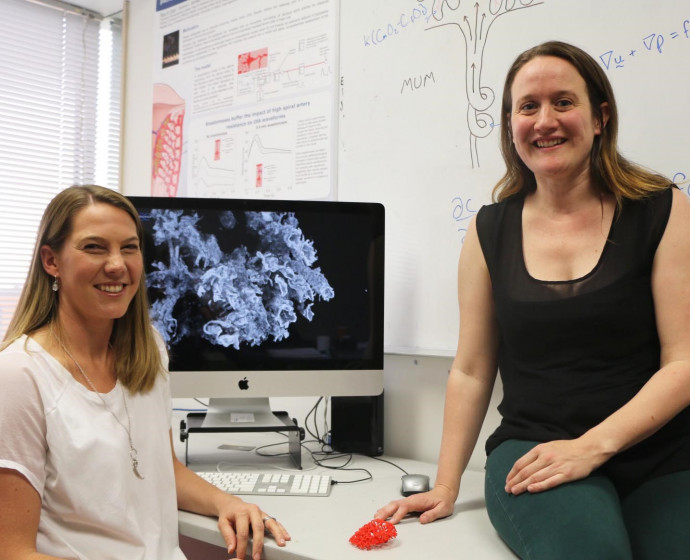Foetal lifeline: feeding your baby in utero

Dr Alys Clark and Dr Jo James of the University of Auckland will study how blood vessels in the uterus contribute to blood flow to the placenta. This could lead to new tools for diagnosing and treating abnormal pregnancies.
Published 8 November 2018

Dr Alys Clark (right) and Dr Jo James (left) in the Auckland Bioengineering Institute laboratory (Photo: provided)
The placenta nurtures a growing foetus by offering oxygen, nutrients and antibodies, and by eliminating waste throughout the pregnancy. It does this by actively modifying the blood vessels in the uterus to increase blood flow to the developing baby. This vital process fails in 10% of pregnancies, leading to foetal growth restriction (FGR) where babies are born abnormally small. This disorder is almost impossible to predict and difficult to diagnose at an early stage of the pregnancy, even with modern medical imaging. We lack understanding of the mechanisms that control the development of a healthy placenta, so the majority of pregnancies affected by FGR are not diagnosed until delivery.
Dr Alys Clark from the Auckland Bioengineering Institute and Dr Jo James from the School of Medicine at the University of Auckland have been awarded a Marsden Fund grant to investigate the changes in blood flow that affect a mother’s ability to nourish her baby. Past research has focused on small blood vessels between the uterus and the placenta. However, Dr Clark’s computational models suggest that larger blood vessels also play an important role in regulating blood flow to the placenta. In this project, the team will create a ‘virtual uterus’ to mimic dynamic changes in blood vessel structure and simulate blood circulation between the uterus and placenta during pregnancy.
This model will help us better understand blood flow to the developing foetus and likely lead to improved early detection and diagnosis of foetal growth restriction. The results may also contribute to the development of novel and effective treatments for abnormal pregnancies.
